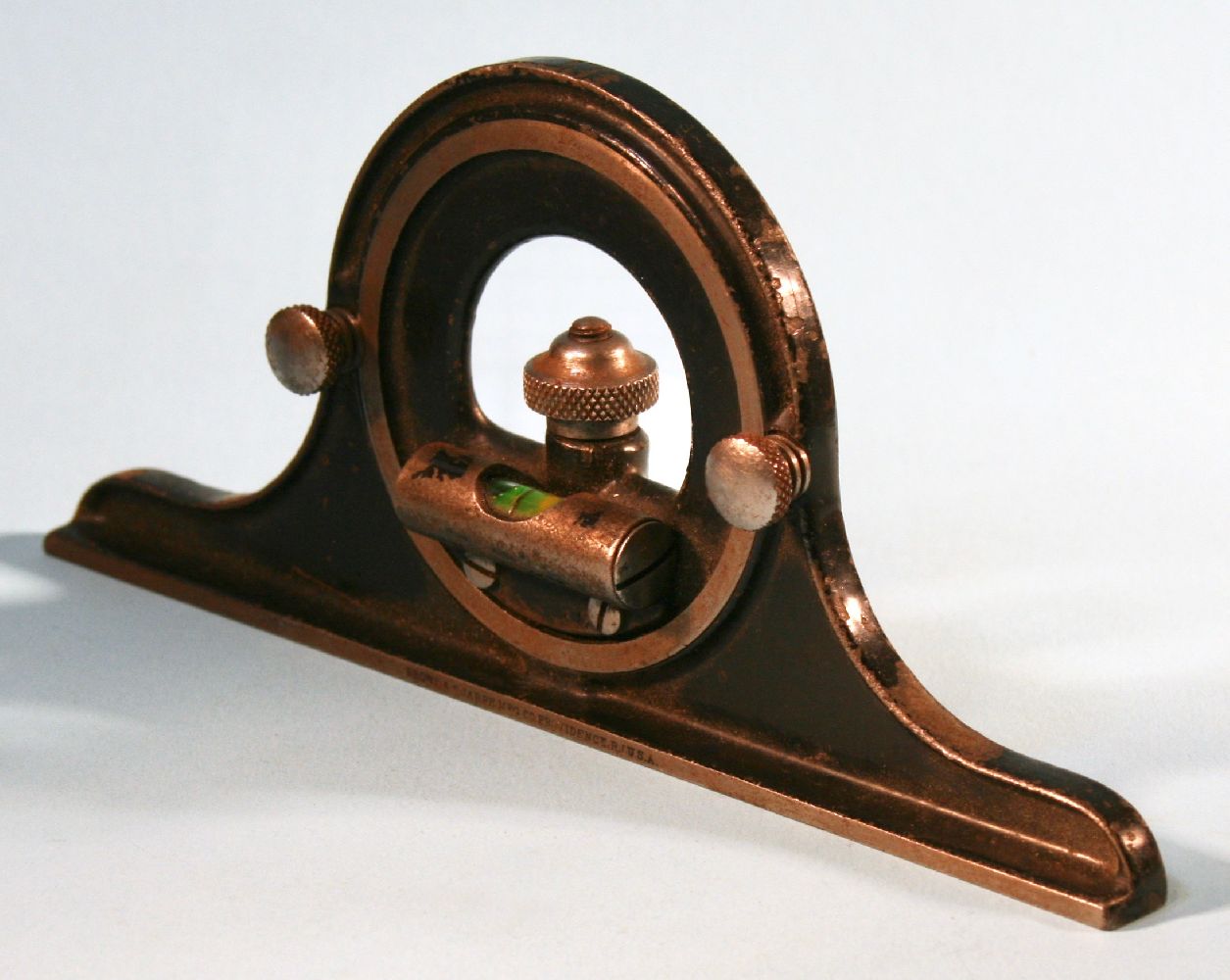

Title: Old Steel Architectural Straight Edge Protractor Level Tool
Shipping: $29.00
Artist: N/A
Period: 20th Century
History: N/A
Origin: North America > United States
Condition: Excellent
Item Date: N/A
Item ID: 32
This is a very nice vintage architectural articulated protractor head for a square. If you're looking for a fabulous collectible tool, this is it. Antique tools are going up in value by the day because of the quality and materials they're made from. They will never make this kind equality again, it's just not cost-efficient. This is a great example of antique steel machinists architectural, drafting, carpenter's level tool. Sign Brown & Sharpe Mfg. Co. Providence R. U.S.A. / VINTAGE COMBINATION SQUARE PROTRACTOR HEAD ANTIQUE MACHINIST TOOL LEVEL. Good used condition, normal wear, could use cleaning, please look at all the pictures.
Measuring angles without a protractor is one of the fundamental aspects of geometry. Sine, cosine, and tangent are three concepts that will allow you to calculate an angle based solely on the lengths of two sides of a right triangle. You can form a right triangle out of any single angle with the help of a ruler and a pencil. Remembering the term "soh-cah-toa" will help you remember what the correct ratios are for the sine, cosine and tangent functions. 1. Examine the Angle Determine what type of angle you are dealing with. If the two line segments open wide to form an angle larger than a right angle formed by perpendicular line segments, then you have an obtuse angle. If they form a narrow opening, then it is an acute angle. If the lines are perfectly perpendicular to each other, then it is a right angle, which is 90 degrees. 2. Draw a Cross Transpose a perpendicular cross across the paper. Position the intersecting point of the cross below and to the left of the intersecting point between the two line segments, and extend each line segment to cross both axes of the cross, if necessary. 3. Examine the Slopes Determine the slopes of the two lines by measuring the rise of the line segment, or its vertical aspect, and dividing it by run, or the horizontal aspect. Take 2 points on each line, measure the difference between their vertical components and divide this by the difference in the horizontal component. This ratio is the slope of the line. 4. Calculate the Angle Substitute the slopes into the equation tan(phi) = (m2 - m1)/(1 + (m2)(m1)) where m1 and m2 are the slopes of the lines, respectively.
Link: https://en.wikipedia.org/wiki/Protractor
A protractor is a measuring instrument, typically made of transparent plastic or glass, for measuring angles. Most protractors measure angles in degrees. Radian–scale protractors measure angles in radians. Most protractors are divided into 180 equal parts. Some precision protractors further divide degrees into arcminutes. They are used for a variety of mechanical and engineering–related applications. One common use is in geometry lessons in schools. Some protractors are simple half–discs. More advanced protractors, such as the bevel protractor, have one or two swinging arms, which can be used to help measure the angle.